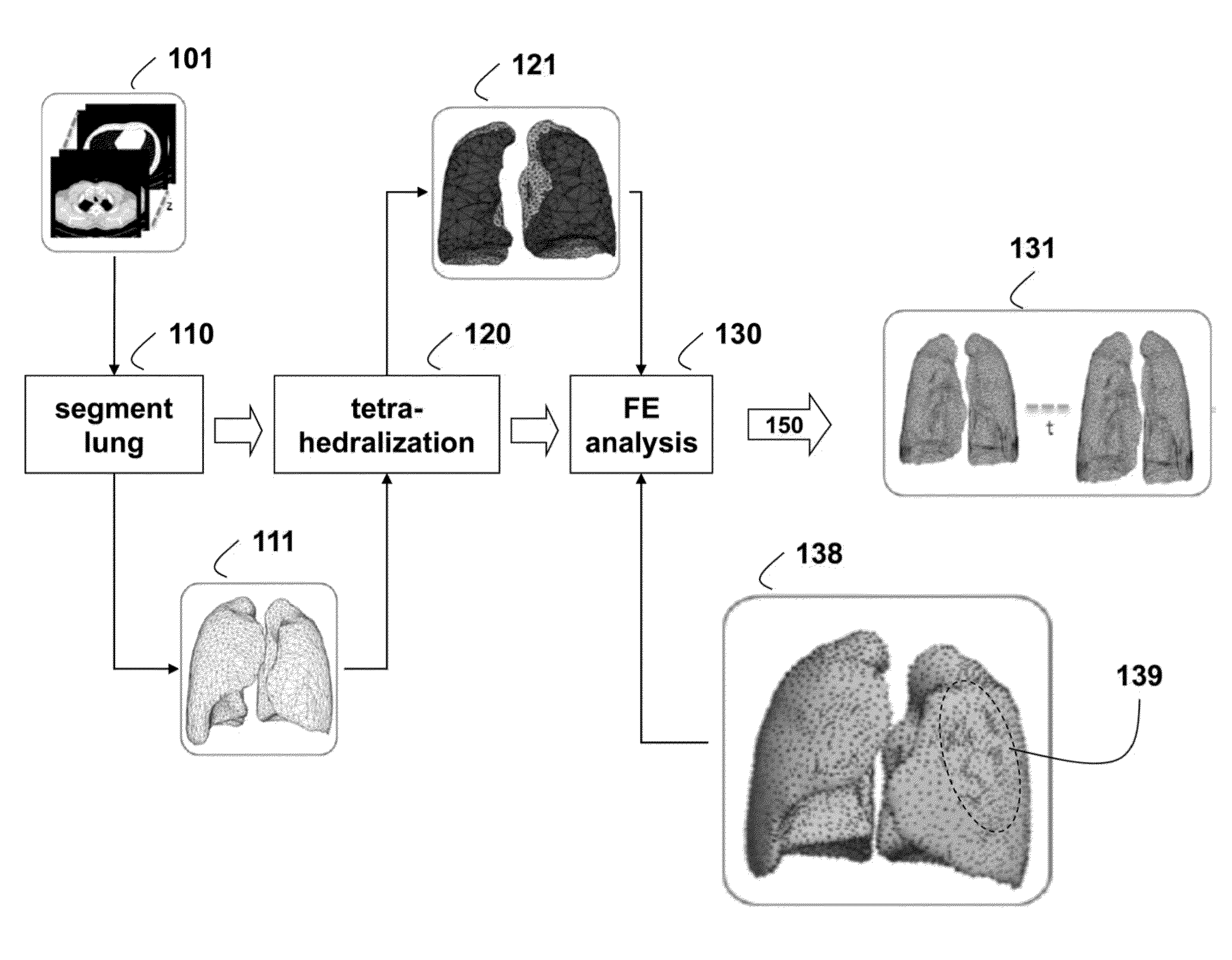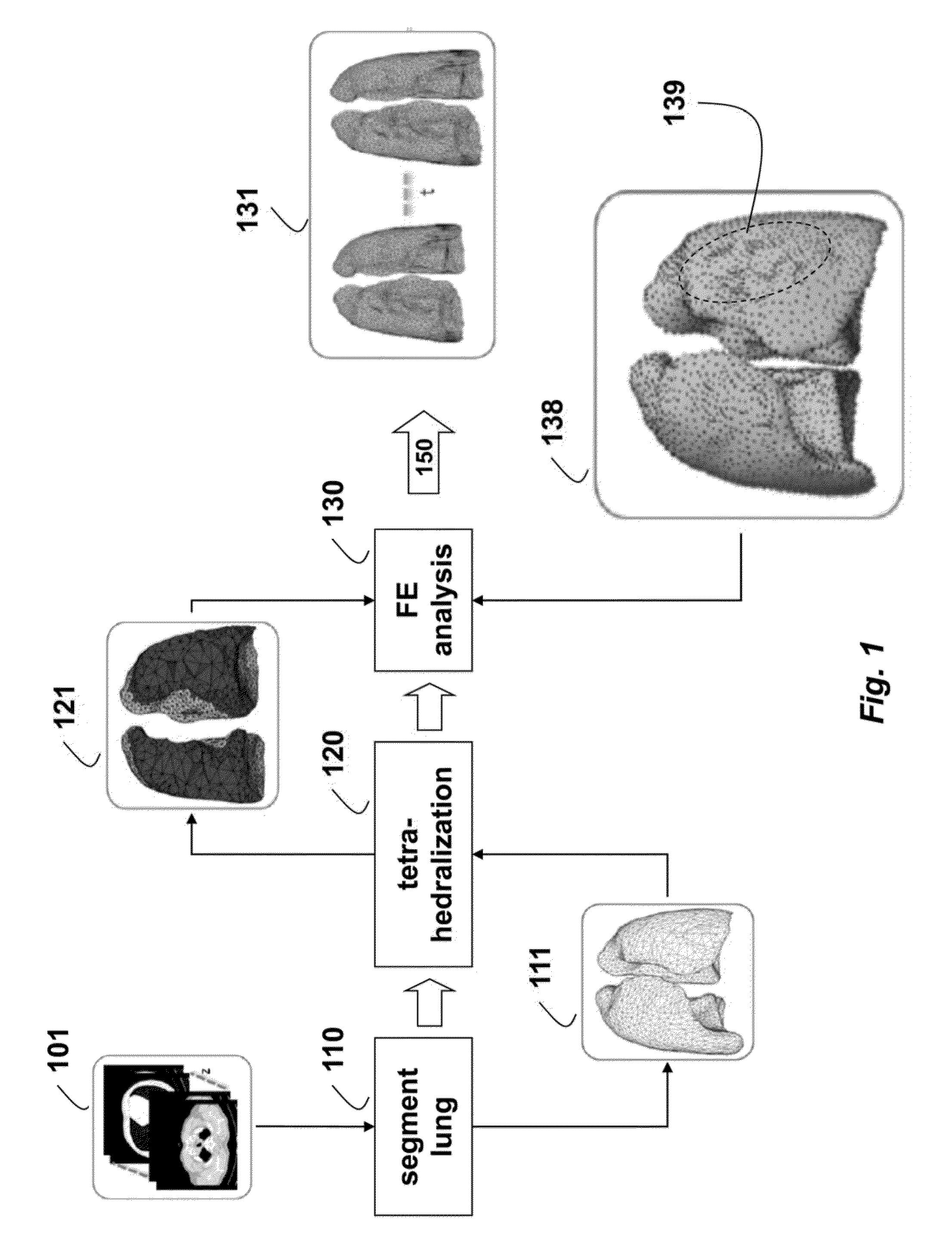Method for Simulating Thoracic 4DCT
a computed tomography and simulation method technology, applied in the field of simulation of respiration for radiotherapy treatment planning, can solve the problems of increasing the radiation dose of the patient, affecting the patient's treatment, and unable to determine the tumor position in-situ, and achieve the effect of high accuracy
- Summary
- Abstract
- Description
- Claims
- Application Information
AI Technical Summary
Benefits of technology
Problems solved by technology
Method used
Image
Examples
Embodiment Construction
Thoracic 4DCT Simulator Method
[0024]FIGS. 1 and 2 show a processing pipeline of a thoracic four-dimensional computed tomography (4DCT) simulator method according to embodiments of the invention. The method includes lung deformation and 4DCT scan simulation. The method can be performed in a processor connected to memory and input / output interfaces as known in the art. It should be understood that the invention can also be used to simulate other types of tissue or organ deformations, and utilize other types of medical scans known in the art.
[0025]Input to the method is a single thoracic CT scan 101. The CT scan is segmented 110 to generate a surface mesh 111 of the lung. Tetrahedralization 120 is applied to the surface mesh to obtain a first volume mesh 121.
[0026]Finite element (FE) analysis 130, using boundary constraints and load definitions 138, are applied to the first volume mesh to obtain a lung deformation 131. The lung deformation is according to an Ogden model, wherein the lu...
PUM
 Login to View More
Login to View More Abstract
Description
Claims
Application Information
 Login to View More
Login to View More - R&D
- Intellectual Property
- Life Sciences
- Materials
- Tech Scout
- Unparalleled Data Quality
- Higher Quality Content
- 60% Fewer Hallucinations
Browse by: Latest US Patents, China's latest patents, Technical Efficacy Thesaurus, Application Domain, Technology Topic, Popular Technical Reports.
© 2025 PatSnap. All rights reserved.Legal|Privacy policy|Modern Slavery Act Transparency Statement|Sitemap|About US| Contact US: help@patsnap.com



